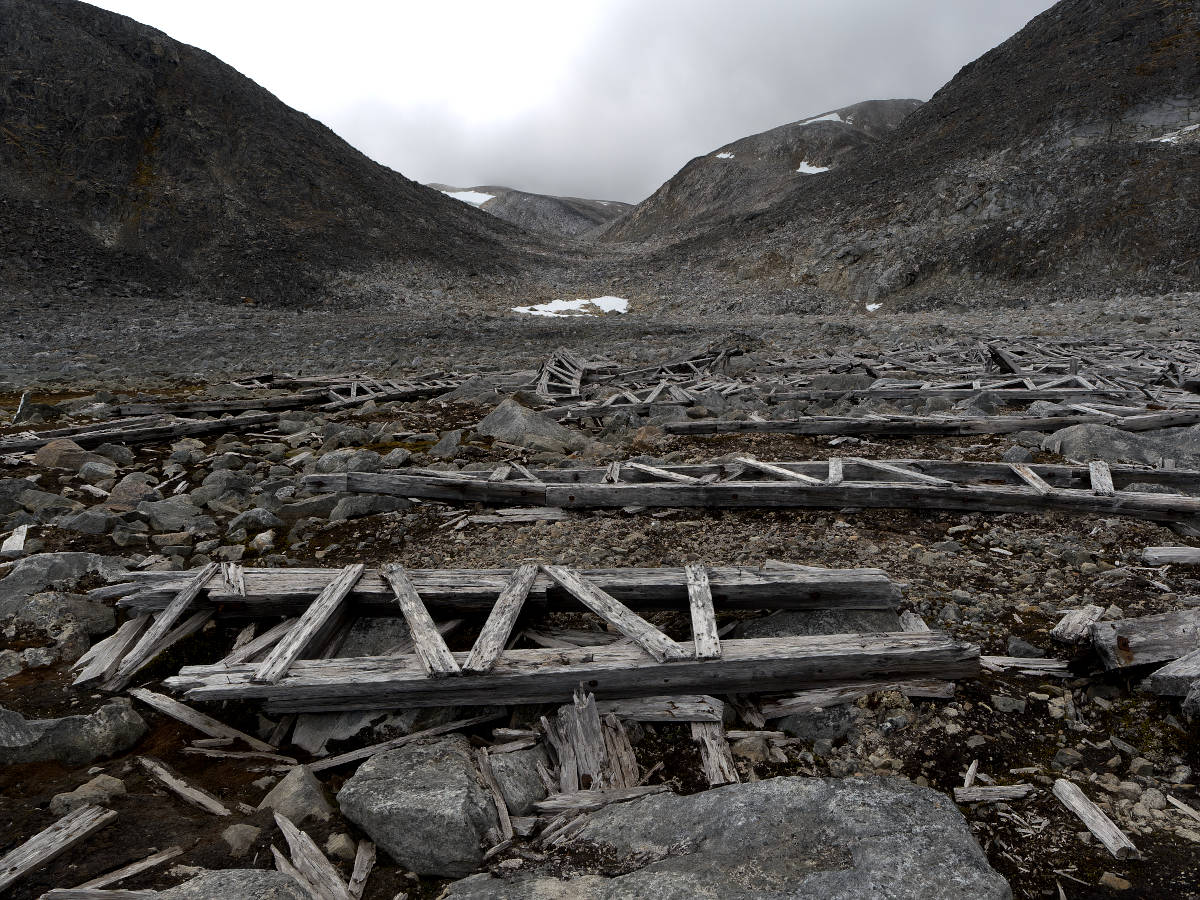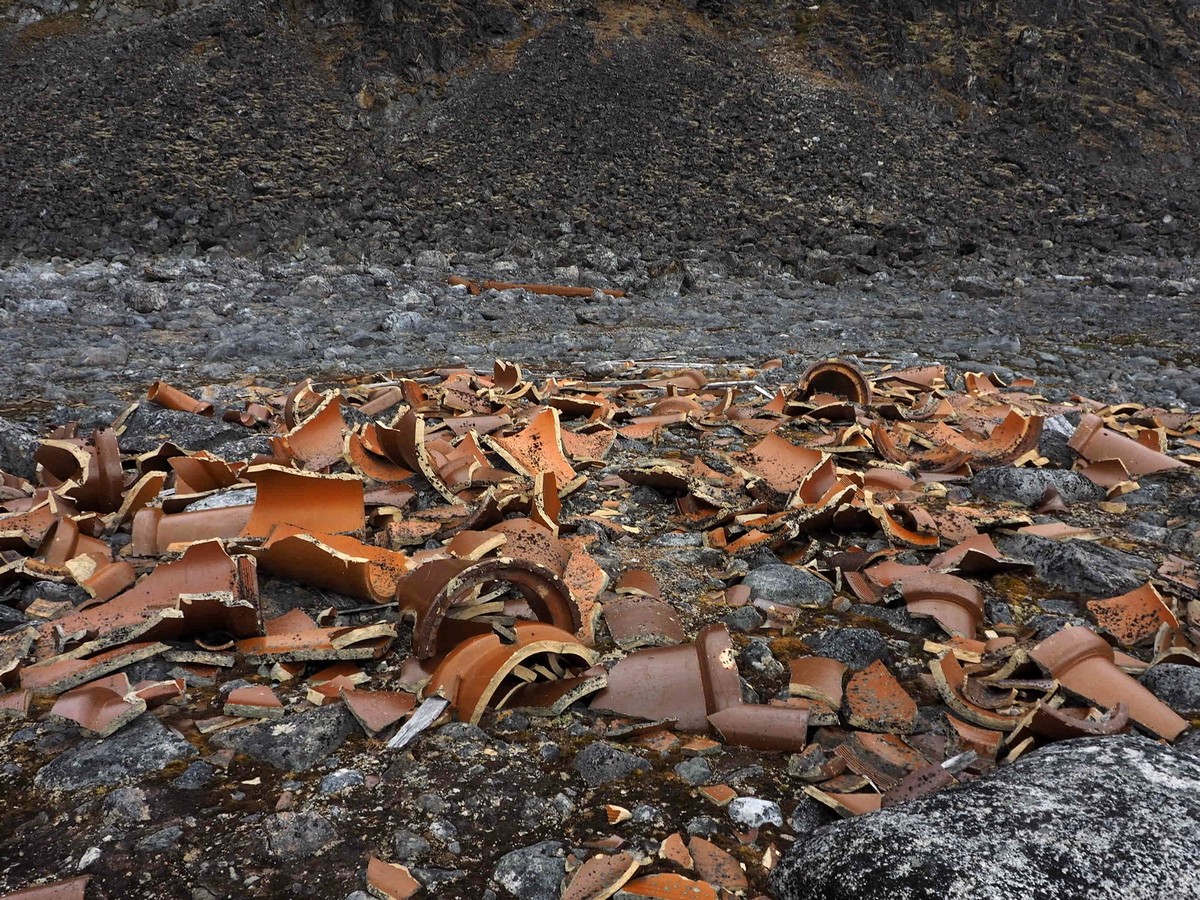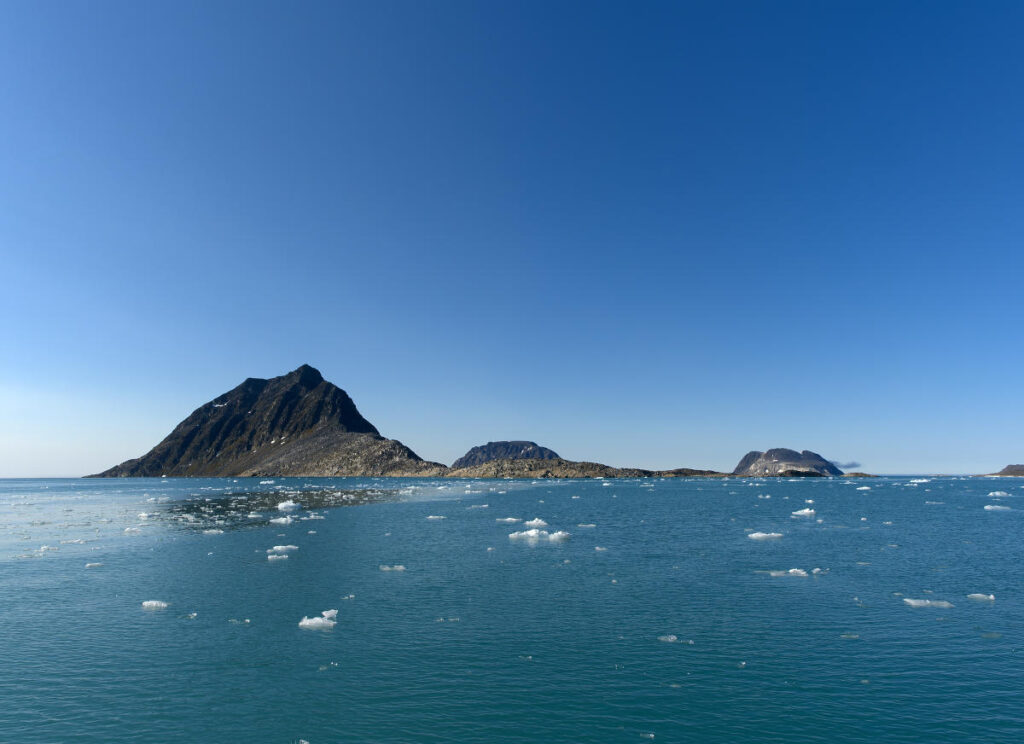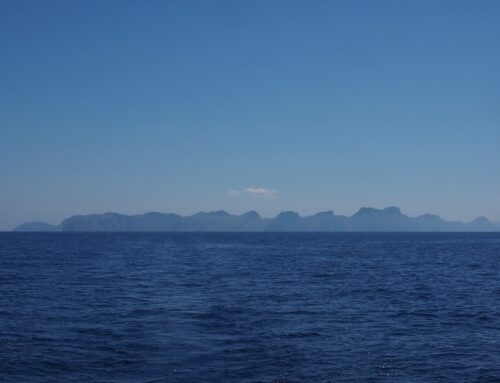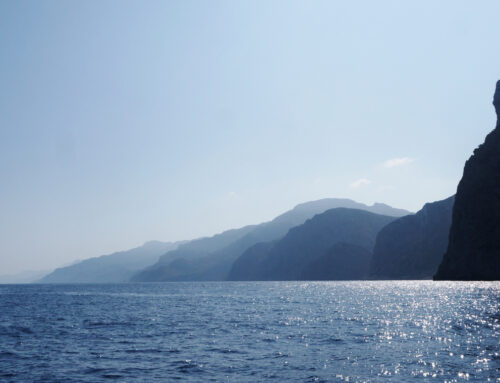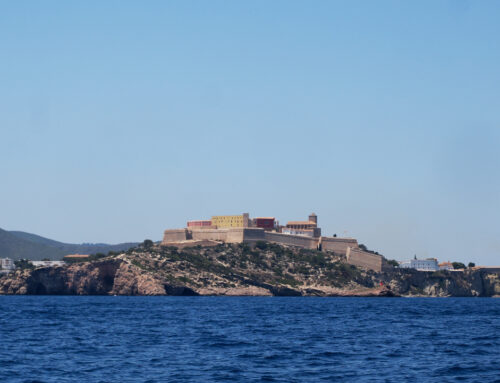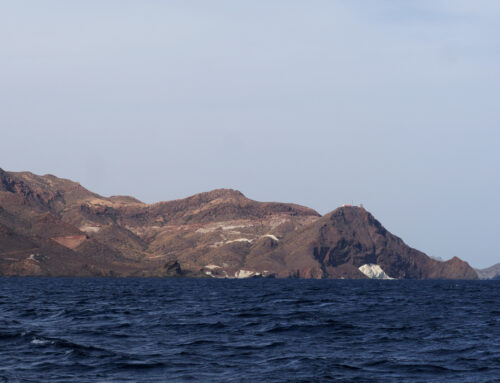Virgohamna “…a desolate, dismal place…”
VIRGOHAMNA
In 1912, Fridjof Nansen, one of Norways most renowned polar explorers, visited Virgohamna and described it as “…a desolate, dismal place…a disagreeable bay…”. This is particularly poignant given that he was on his way back to civilization from a winter stuck in the sea ice and that this was the first land he had seen in long time.
In the 21st century, Viroghamna is one of the main tourist attractions on Svalbard. Neither of us had heard of the place before we arrived in Svalbard, but urged by other sailors we got the required permit from the Sysselmesteren to land there just in case we ended up in the neighbourhood. It is famous essentially because it is one of the places where a bunch of blokes tried to out-arctic-macho each other and, either having unsurprisingly died in the process or gone off to commit other acts of foolishness, had left all their shit lying around.
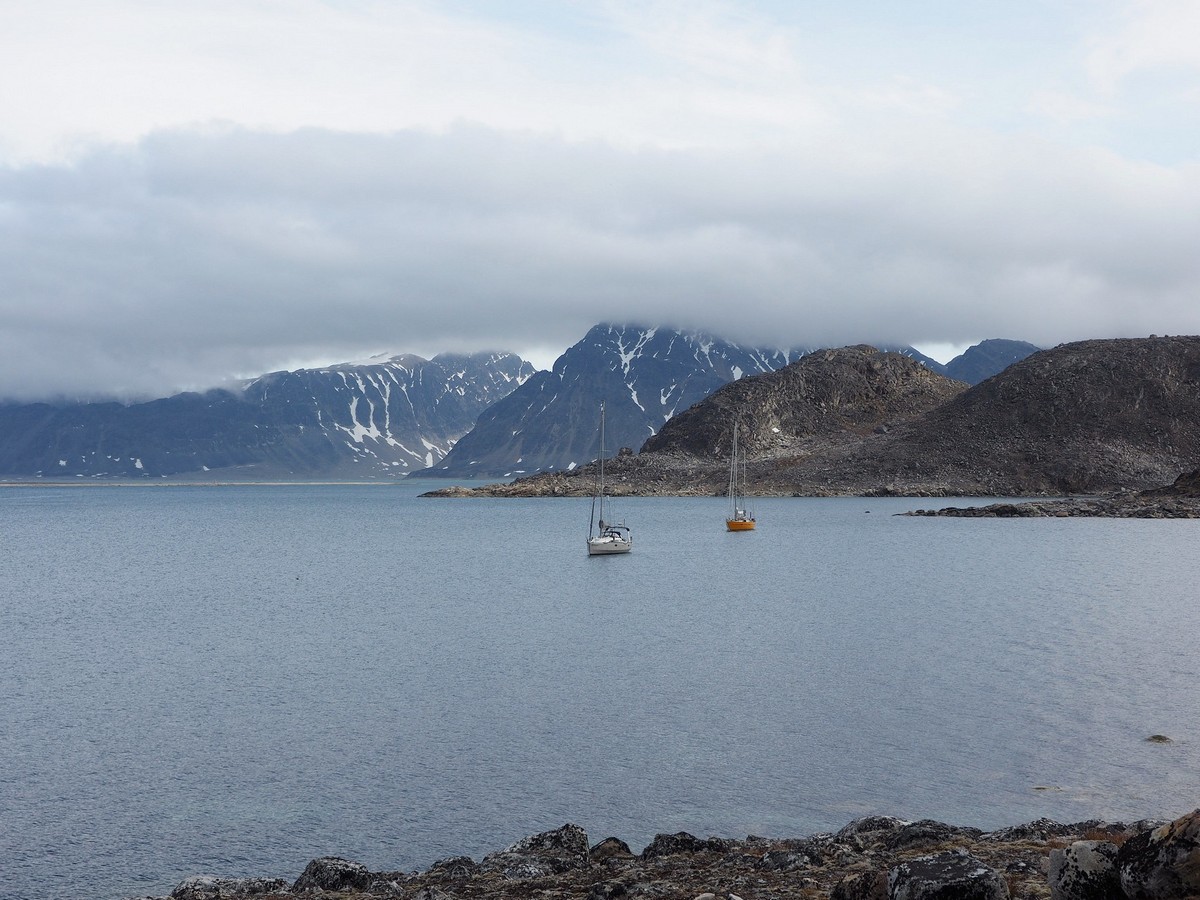
SVs Yuma and Saraban’de at anchor at Virgohamna.
However, it is also a stunningly bleak and eerily beautiful place, Fridjof Nansen’s opinion notwithstanding. The bay itself is quite small, perhaps half a mile across, and is closely hemmed in by glacier ground hills with steep, rounded slopes of scaled, dark rock. Two smoothly rounded and bare valleys rise quickly before, during our visit at least, fading into the brighter heights of a low foggy cloud. Those glowing heights just begged to be explored.
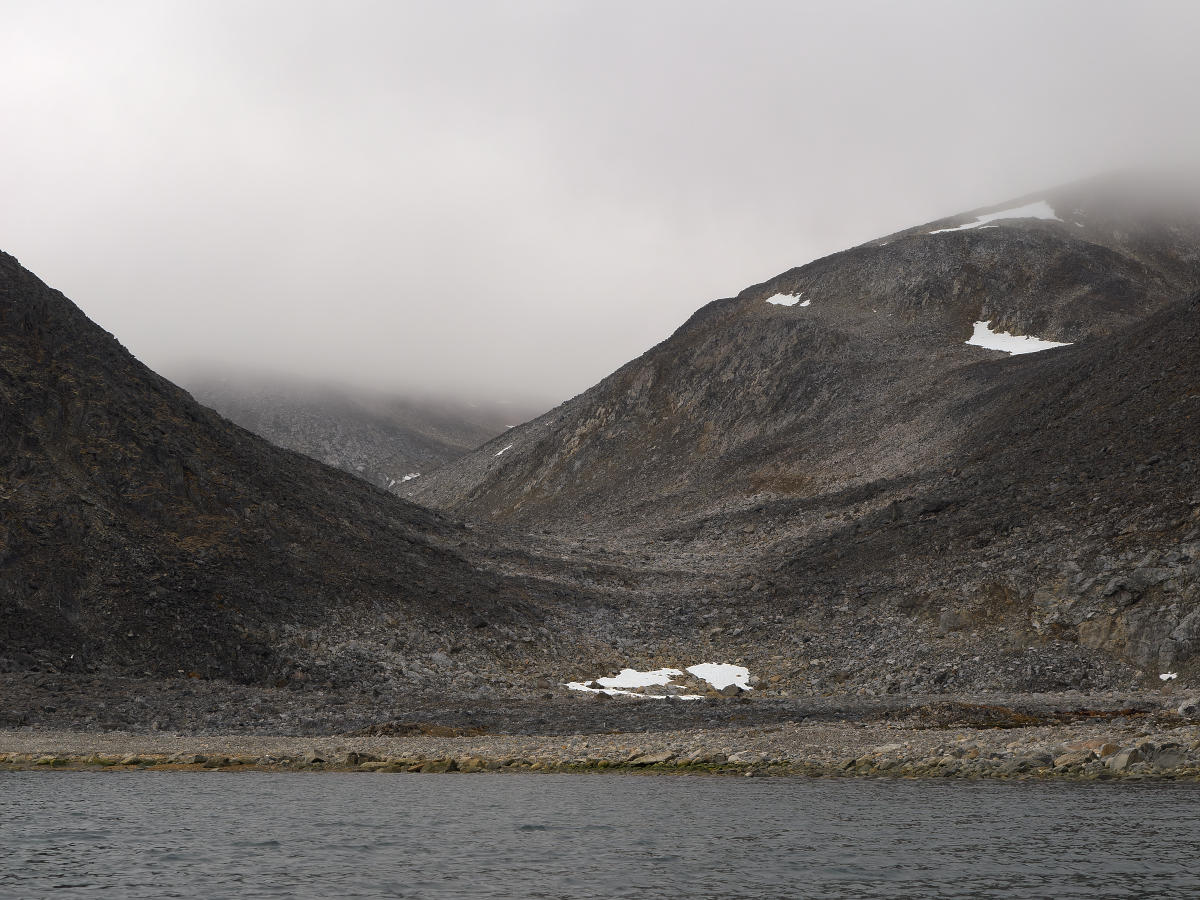
Valleys waiting to be explored, however….
POLAR BEAR(S?)
That urge, strong though it was, was easily suppressed given the presence of a dead walrus at the eastern end of the bay, and, perched on top of that dead walrus, a very much alive polar bear. With a meal large enough for two or three bears to perch upon, it seemed reasonable to expect that more bears could turn up at any time to join bear #1, perhaps from the deeper reaches of those very attractive valleys. So, despite there being a couple of other boats in the anchorage with whom we shared bear guard duty, we limited our shore time to just exploring the wreckage of human activities that were close to the shore and our dinghy.
HISTORICAL SITES OF VIRGOHAMNA
Those activities started with Dutch whaling efforts. In the mid-1600s the Dutch whaling settlement at Smeerenburg, just a couple of miles away across the channel, had got a bit crowded. Given this, the whalers from the city of Harlingen decided to decamp to Virgohamna, from whence they operated for the remaining period of shore-based whaling. They left behind the remnants of a building, some try-works and a few graves.
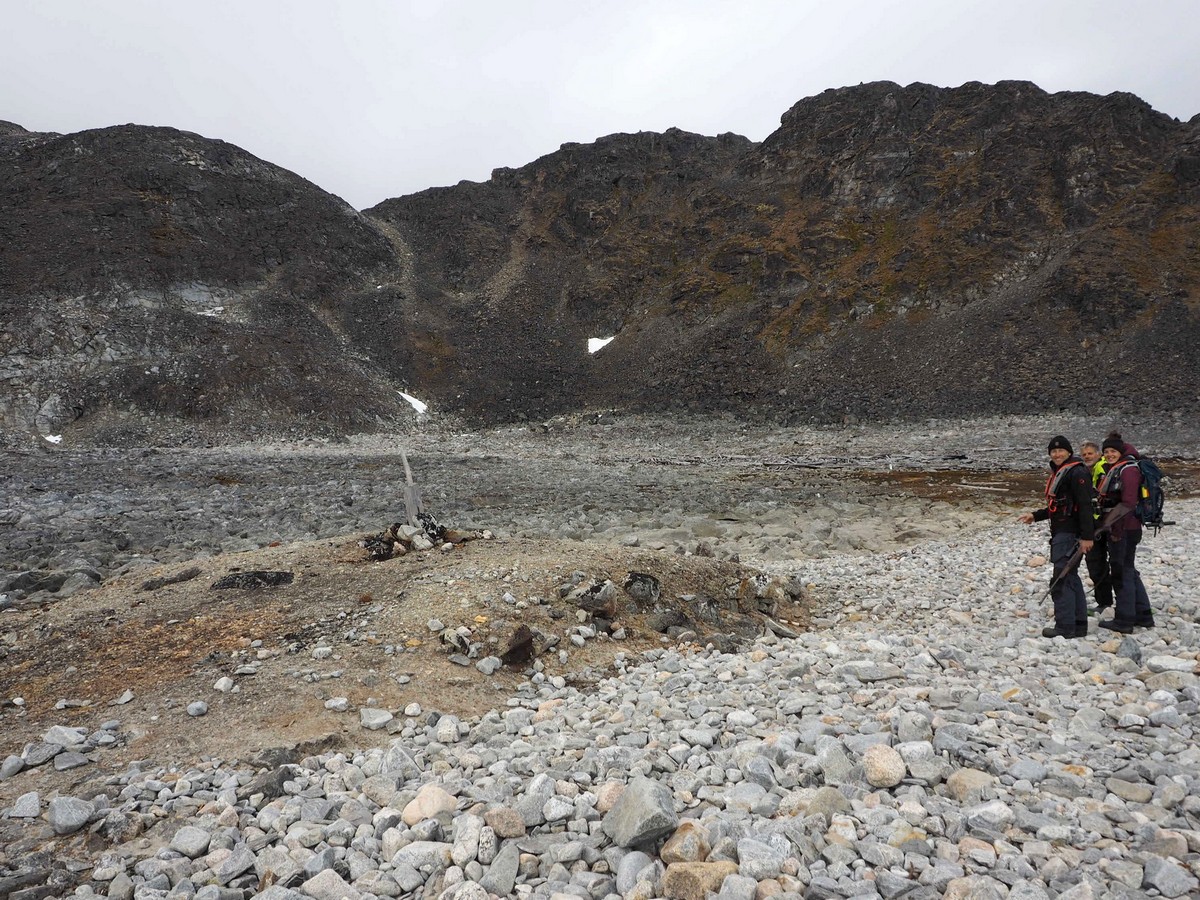
Remains of Harlingen try-works, with Matthijs, David and Deborah.
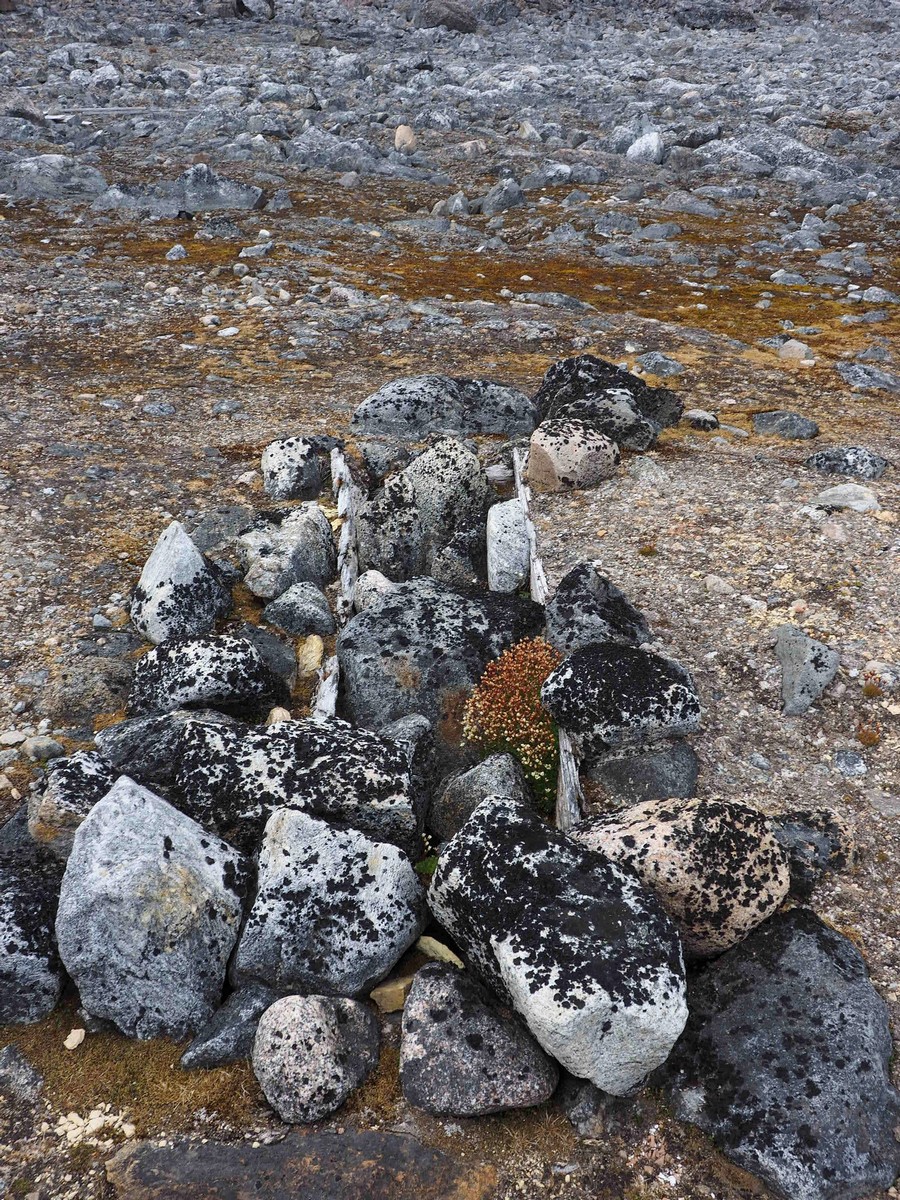
Remains of a grave at the Harlingen whaling station.
Three hundred years later a wealthy British gent, a Mr Pike, decided that he would like to experience a Svalbard winter and to do so had a cabin constructed there. He and six members of the ship that took him up there spent the winter of 1888-89 at Virgohamna. Presumably they had a jolly good time of it because Mr Pike came back a few times in the years afterwards.
THEN THE REAL SILLINESS BEGAN
In 1896 Virgohamna was Fridjof Nansen’s first stop after his vessel ‘Fram’ had escaped the pack ice it had got stuck in during his attempt to reach the North Pole. At the same time Salomon Andrée and his colleagues were constructing a hangar and facilities for their ill-conceived attempt to balloon over the pole. Ill-conceived? Let’s just say that their back up plan, should things go wrong, was to sled and ski back to safety – exactly what everyone had thus far failed to do when going in the opposite direction. Enough said? Andrée and his colleagues made it some 4-500 miles in a NW direction before landing on the ice and eventually dying on the island of Kvitøya after travelling and drifting on the ice for some months. Their remains were not found until 1930. An epic tale for sure but not a happy ending.
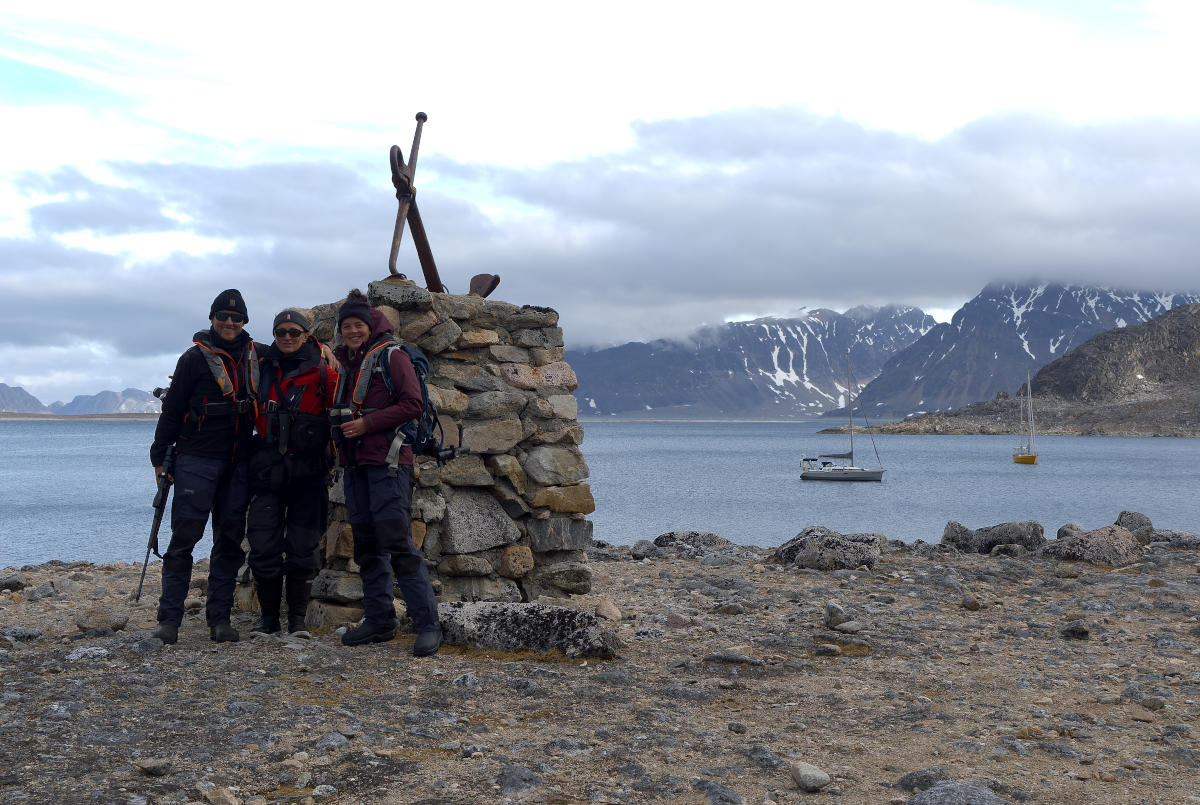
Matthijs, Frederieke and Deborah at the Andrée monument.
Next up was Walter Wellman, an American journalist who in 1907 and 1909 used dirigibles instead of balloons. He was far more successful in that when in 1909 he and his crew did get airborne they didn’t get very far and all survived unscathed.
Crap left lying around by Walter Wellman: remains of hangar to house his dirigible (left) and broken ceramic pots that stored the acid to make hydrogen for his dirigible (right).
Next was the Italian Nobile who had successfully flown a dirigible with Amundson from Ny-Ålesund across the North Pole to Nome Alaska. The fact that Amundsen had subsequently behaved as if it was all his doing and had refused to acknowledge who had designed, built, provided and flown the dirigible (that being Nobile) meant that Nobile had to recover his National and personal pride. He had to do it again alone. Like Andrée however this time he managed to crash his dirigible on the ice. Nobile and nine of his crew of 15 were rescued alive, however, the other six and some of the many rescuers who rushed to find them died in the incident and the ensuing massive international rescue operation. Perhaps the only consolation for Nobile was that one the rescuers who died was Amundson. They weren’t best friends by that time.
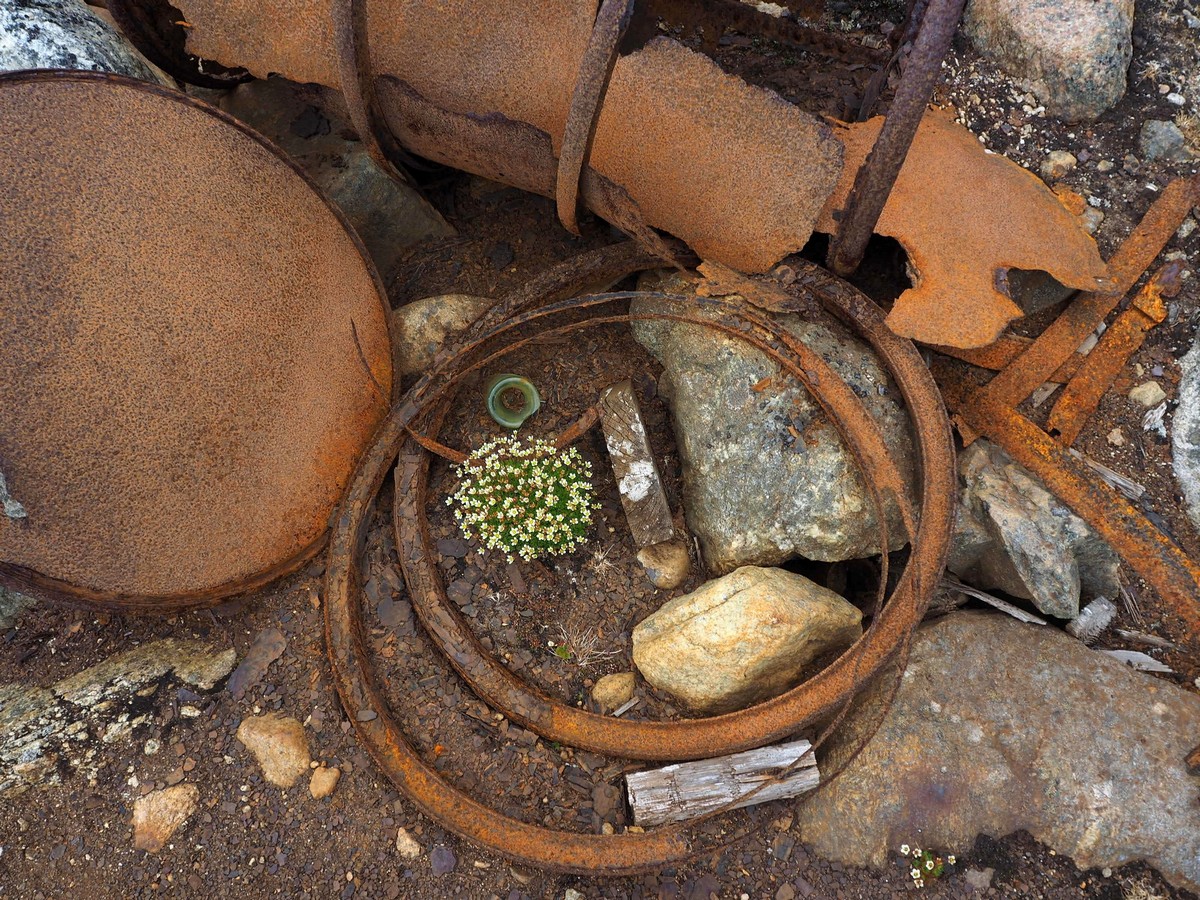
The flowers are fighting back!
These were daring attempts to be sure and the ruins of the hangars, the hydrogen production facility, and the remains of the gondola of Wellman’s dirigible ‘America’ are interesting enough, but my favourite amongst these latter day Virgohamnites would have to be Mr Pike. You’ve got to like the pluck of a fellow who decides that the experience of a polar winter is a must do thing and packs up a prefabricated house and enough crumpets and tea in order to choof off to do just that. Bravo, Mr Pike, Bravo, jolly good show and all that.

